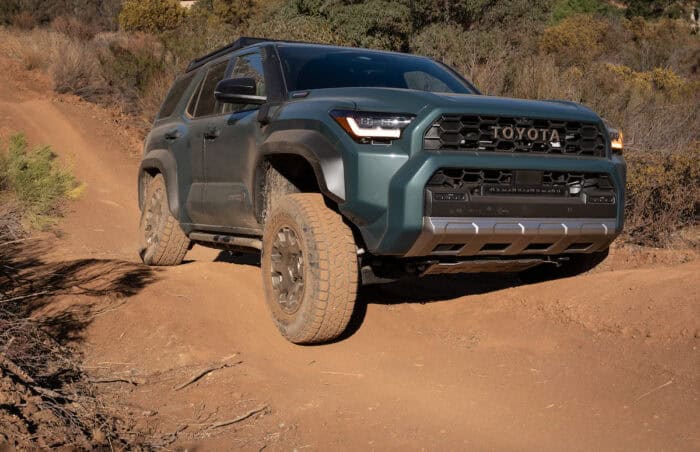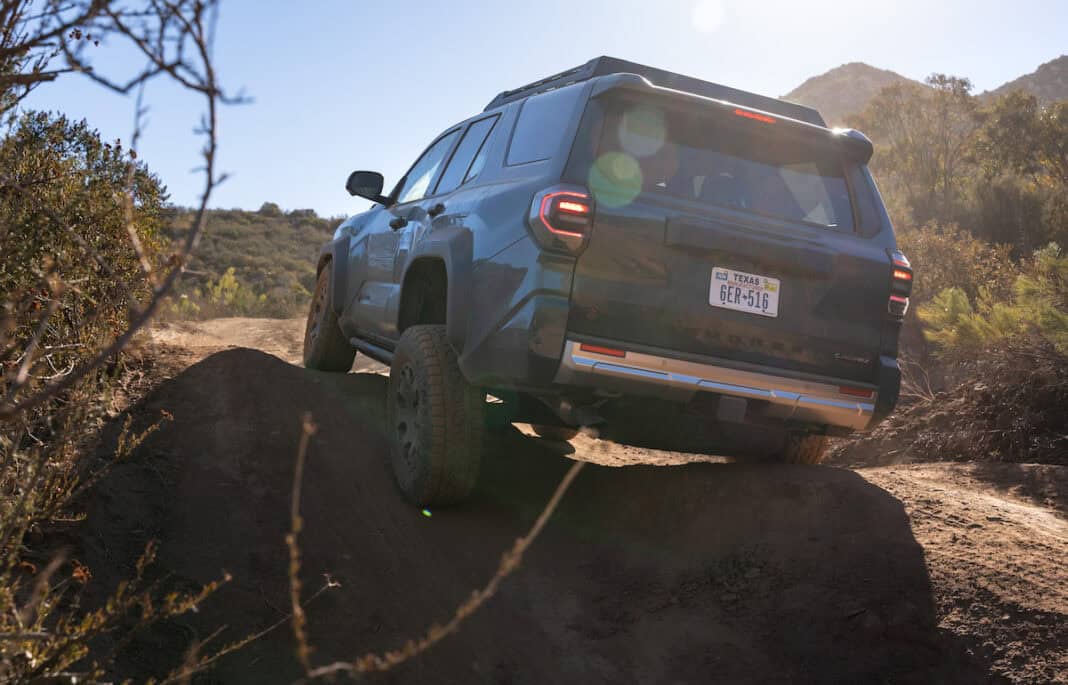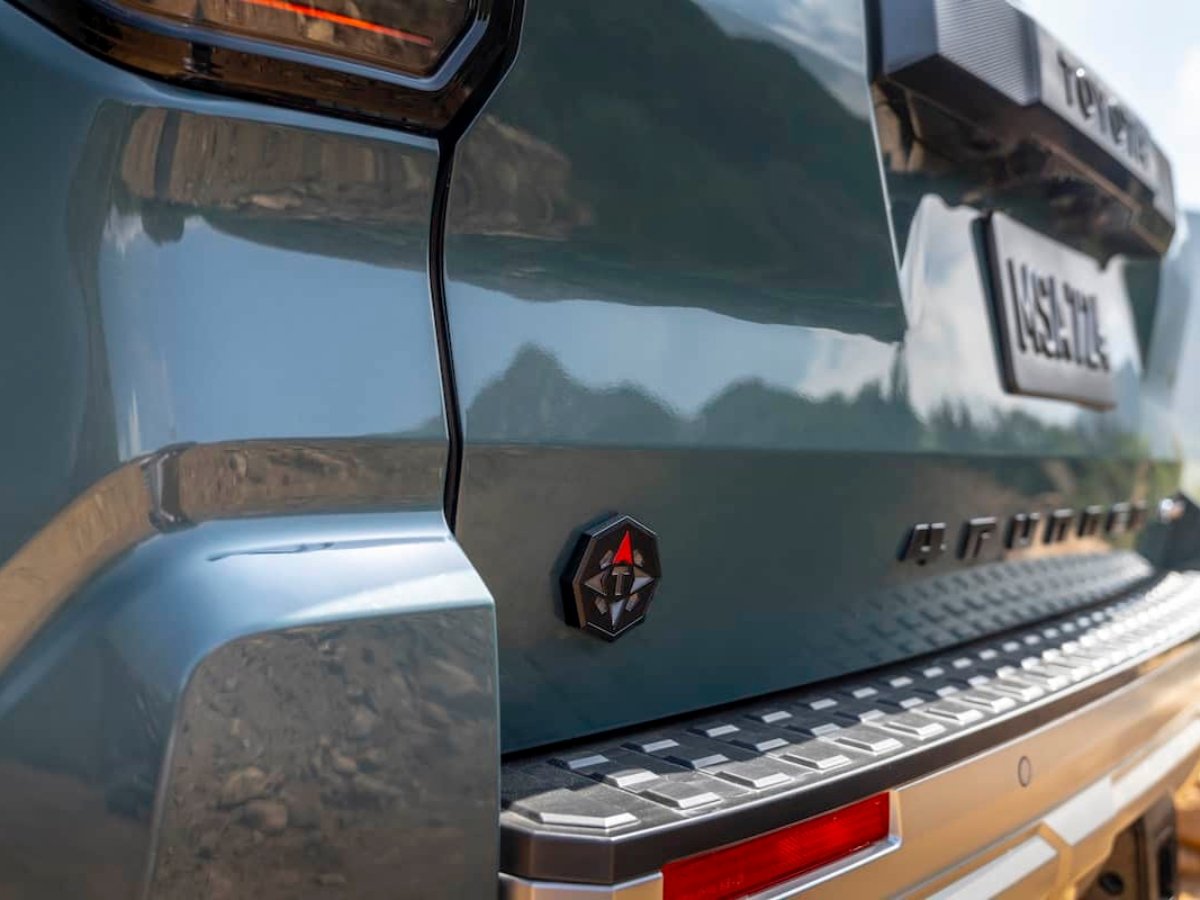The hotly anticipated sixth-generation Toyota 4Runner is finally hitting showrooms soon, and not only is the new truck more spacious, more powerful, and more efficient, but the model line-up has expanded to include some new trims.
For decades now, the 4Runner’s audience has been largely split. There are those who liked the cargo space and towing capacity of Toyota’s mid-size SUV, but wanted it fancied up with high-end audio systems and leather seats. Others celebrated the truck’s reputation for durability and considerable off-road prowess, making it their choice to head off the beaten path for adventure.
Related – We Drove the 2010 and 2025 4Runner: Here’s What Toyota Got Right (And Wrong)
A Factory 4Runner Built for Real Adventure

The concept of overlanding has grown wildly in popularity in North America in recent years. It wasn’t lost on Toyota’s planners that their models – specifically Tacomas and 4Runners – tend to be favorites for many folks embarking on these adventures. Overlanding involves travelling to remote locations in a self-sufficient manner. And with powerful portable battery packs, solar charging, and even high-speed internet available anywhere on the planet, it’s become easier to be truly off-grid and self-sufficient. Toyota’s new Tacoma Trailhunter leads the way.
“The on-board compressor is another handy tool that makes short work of inflating air mattresses, but also airing-up tires in short order after a day of rock crawling.”
The Trailhunter is not only the top of the 4Runner line-up now, but it’s intended to be Toyota’s offering to the overlanding crowd, and given its spec sheet, it’s about as well-suited to the job as you can get, straight off the showroom floor.
Built Tough, Ready to Camp

From the ground up, the Trailhunter (along with its TRD Pro cousin), stand taller than the rest of the 4Runners with 10.12-inches (257 mm) of ground clearance, plus an improved approach, departure and breakover angle. Unlike the TRD Pro with its Fox shocks designed for high-speed desert running, the Trailhunter is built on a suspension by Australian company, Old Man Emu with 2.5-inch forged shocks, meant to maximize articulation and take a low-speed pounding.
Related – The New 4Runner Trailhunter’s 7 Off-The-Grid Features to Know

The Trailhunter’s underside is well-protected with a series of robust skid plates. There are Rigid Industries fog lights that can switch between clear and amber, plus an incredibly bright light bar nestled into the grille. The standard roof rack is by ARB and is solid enough to manage a dynamic load of 165 lbs, and up to 770 lbs static, which will please those looking to fit a sizeable roof-top tent and awning.
The Trailhunter’s suspension is calibrated to perform off-road even when loaded up close to its maximum gross vehicle weight rating (GVWR). Overlanding gear can get heavy, but the Trailhunter’s impressive off-road abilities shouldn’t be diminished by that.
Related – The 2025 Toyota 4Runner Looks Familiar, But There’s a Catch
Power, Range, and Comfort for the Long Haul
Like the Tacoma Trailhunter, the 4Runner is powered exclusively by a 2.4L turbocharged hybrid drivetrain that dispenses with 326 hp and a burly 465 lb-ft of torque, helping the truck earn a 6,000 lb tow limit. Beyond the generous thrust afforded by the electrified drivetrain, overlanders will appreciate the Trailhunter’s 2,400W power output that can easily juice an entire campsite, including powering essentials like an on-board refrigerator/freezer unit. The onboard compressor is another handy tool that makes short work of inflating air mattresses, but also airing up tires in short order after a day of rock crawling. The one downside is the amount of cargo space the hybrid system’s battery pack takes up, raising the cargo floor a few inches compared to the gas-only variants.
This new, sixth-generation 4Runner is bound to appeal to a broader audience than ever before, but with its increased capability and interior room, Toyota’s mid-sized truck-based SUV is poised to push further into the back country on epic overlanding events than it has ever gone before.
- 1.0K
- 1.2Kshares



